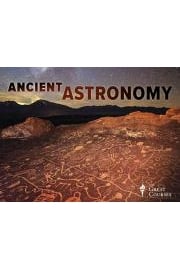In the second episode of The Remarkable Science of Ancient Astronomy, titled The Real Stonehenge, viewers are taken on a journey to explore one of the greatest prehistoric mysteries of the world – Stonehenge. For centuries, this ancient stone circle monument in England has baffled historians, archaeologists, and astronomers alike. However, recent discoveries and scientific revelations have led to new theories on what Stonehenge may have been used for and the complexities of its construction.
The episode begins by laying out the basic information and common theories surrounding Stonehenge. Viewers are informed of the monument's estimated age, the various types of stones used in its construction, and its alignment with the solstices and equinoxes. The narrator notes that while many experts have suggested Stonehenge to be an astronomical observatory, no evidence has ever been found to support this theory. However, advancements in technology and science have reignited the investigation into the purpose of the famous stones.
The episode then delves into the use of ground-penetrating radar and other remote sensing techniques to gain a better understanding of the underground features of Stonehenge. Viewers are shown digital models that reveal the location of hidden pits and gaps in the soil, which could have potentially held wooden posts that served as sighting devices. The narrator explains the theories behind these posts, suggesting that they could have been used as a calendar or in concert with the solstices and equinoxes to predict the passage of time.
Next, experts reveal the latest findings in regards to the transportation and placement of the massive stones that make up Stonehenge. With each stone weighing upwards of four tons, it seemed almost impossible for prehistoric people to have moved them such distances – until now. The episode features an experiment in which a team of experts successfully moves a similar four-ton stone over rough terrain using only ropes, wooden rollers, and brains. They show how Ice Age glaciers may have placed the stones closer to the site, and the techniques people probably used to transport the stones to their final location. In addition to the theories of physical movement, viewers are also introduced to the idea of emotional movement and the significance that Stonehenge may have held as a pilgrimage site, drawing people from hundreds of miles away.
Viewers are then taken on a tour of the surrounding landscape, where new revelations have been made in regards to the precise alignment of Stonehenge with the stars. A drone is flown over the landscape to reveal the incredible accuracy of the site's alignment, which may have been achieved through the use of sighting poles and horizon markers. The narrator explains the significance of these markers and how they would have been used to determine the true north and other astronomical measurements.
Finally, the episode concludes with a look at possible rituals and ceremonies that may have taken place at Stonehenge. New theories suggest that the monument may have been used for rites of passage, such as initiation into manhood and womanhood, as well as astronomical and solstice ceremonies. The narrator explains how Stonehenge may have served as a central hub for the elite to gather and exert their power over the common people, as well as a place of unity for people from different regions and cultures.
In conclusion, The Real Stonehenge offers viewers an in-depth look at the latest scientific advancements in the study of this incredible prehistoric site. With the use of new technology and discoveries, experts are able to provide fresh insights into the purpose and meaning of Stonehenge, shedding new light on what may have occurred at this ancient site.
-
Channel
-
First AiredJanuary 6, 2017
-
Content RatingTV-PG
-
Runtime30 min
-
LanguageEnglish

-
 Stream other movies like this for free.
Stream other movies like this for free.
-
 Find something to watch for free.
Find something to watch for free.
-
 Anytime, Anywhere
Anytime, Anywhere

 Stream other movies like this for free.
Stream other movies like this for free.
 Find something to watch for free.
Find something to watch for free.
 Anytime, Anywhere
Anytime, Anywhere